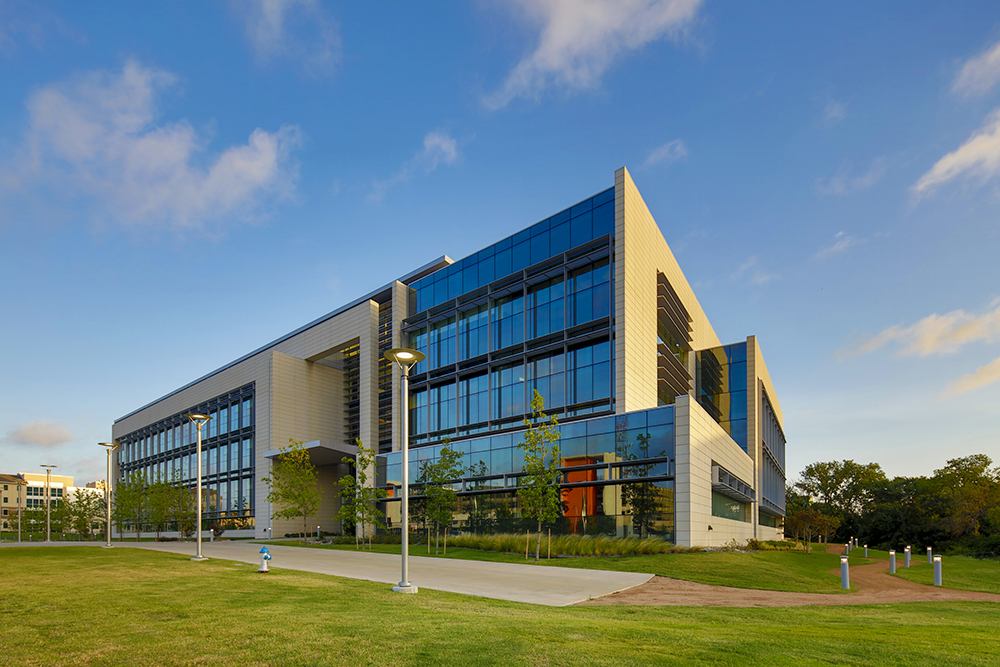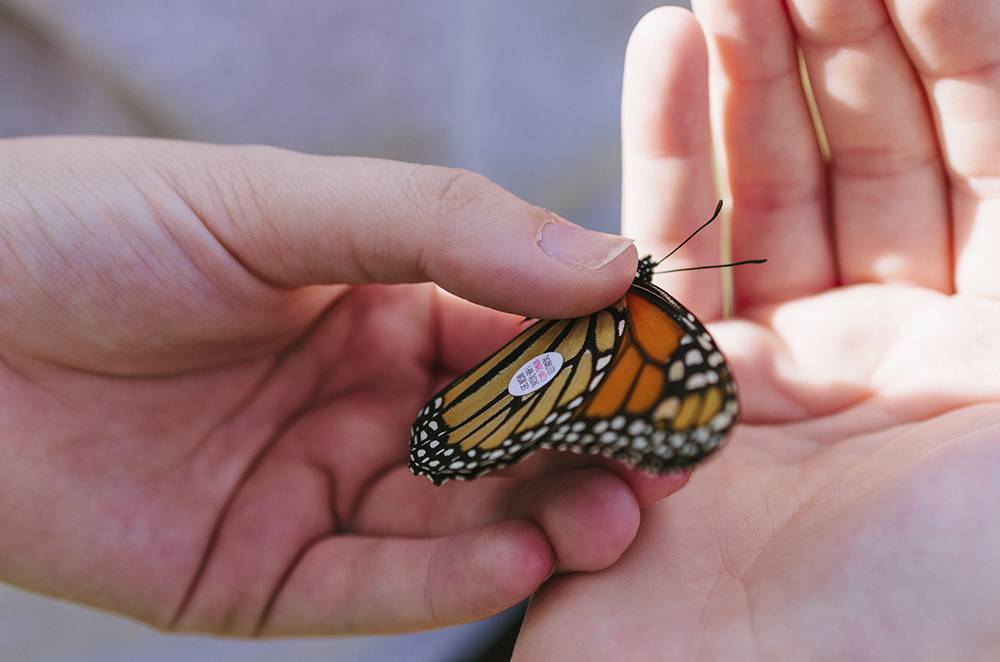
The Bioengineering and Sciences Building is certified as a LEED Gold building. It has sustainable wood products throughout and a lighting conservation system that adjusts to the amount of light outside the building using daylight harvesting sensors.
In 2016, UT Dallas' sustainable practices were acknowledged by five sustainability programs and associations, garnering national and international recognition.
The Association for the Advancement of Sustainability in Higher Education (AASHE) recognized UT Dallas with a Bronze certification in its Sustainability Tracking, Assessment and Rating System (STARS). The AASHE STARS program is a transparent, self-reporting framework for colleges and universities to measure their sustainability performance. Schools are evaluated on their performance in four categories: academics, engagement, operations, and planning and administration. A STARS certification represents significant sustainability leadership.
Through its AASHE STARS participation, the University also made the Sierra Club’s 2016 Cool Schools list. It is the third time UT Dallas has made the list, improving its rating each year.
“It has been exciting to lead the growth of the sustainability program on campus and to work with students and other departments to educate and implement new green initiatives,” said Thea Junt MS’16 MBA’16, associate director of energy conservation and sustainability. “Achieving AASHE STARS certification is a major milestone for our campus, and we will continue to work toward enhancing our programs.”
Junt said growing student involvement has helped expand sustainability efforts on campus. Student Government leads a Green Initiative to help improve campus sustainability, and the Office of Student Volunteerism (OSV) is involved with many of the campus outreach programs, such as Earth Week, E-Waste Roundup and Texas Arbor Day.
“Over the years, our students have shown an increased interest in and stronger commitment to environmental restoration, conservation and sustainability,” said Monalisa Amidar MA’15, OSV director. “Thanks to Student Affairs, Student Government, campus and community partners, coupled with a strong partnership with the Office of Sustainability and Facilities Management, we are able to provide more educational and service opportunities that support our students' sustainability goals. I continue to be inspired by the UT Dallas community's resolve to continue learning together on how to minimize our carbon footprint and best care for our planet.”
The University has also invested in green programs, such as single-stream recycling, an on-site composting program and green building standards for construction and renovations.
LEED-ing The Way
The United States Green Building Council recognizes environmentally conservative design and construction features with Leadership in Energy and Environmental Design (LEED) certifications. UT Dallas has five LEED-certified buildings on campus, plus two buildings in construction that will be submitted for LEED review next year.
The most recent building to receive a LEED certification was the Bioengineering and Sciences Building (BSB). Designed and constructed following green and sustainable guidelines, BSB is certified as a LEED Gold building. The building has sustainable wood products throughout and a lighting conservation system that adjusts to the amount of light outside the building using daylight harvesting sensors. In addition, rainwater collected from the roof irrigates the grounds of BSB and Natural Science and Engineering Research Laboratory (NSERL).
The Student Services Building, which opened in fall 2010, was UT Dallas’ first facility to earn LEED certification and the first in the UT System to obtain Platinum certification — the highest designation that can be achieved. The Edith O'Donnell Arts and Technology Building, Naveen Jindal School of Management Addition and the complex composed of Residence Hall West, Dining Hall West and Rec Center West have earned Silver certifications.
“By implementing sustainable building practices as our campus grows, we are able to ensure that our infrastructure is not only reflective of the Tier One university we have become, but that it will support several generations of future Comets,” said Dr. Calvin Jamison, vice president for administration. “Our team has done an outstanding job integrating green practices into the daily operations and services on campus, and they are working hard to continue the growth of these programs.”
'Deeply Rooted in the Culture of UT Dallas'
Departments across campus also are enhancing their green practices. Within Auxiliary Services, Parking and Transportation has expanded its car and bike sharing services, and Dining Services recently earned a 3-Star Certification for Dining Hall West from the Green Restaurant Association (GRA).
Through combined efforts such as these, UT Dallas has also earned a spot on The Princeton Review’s Guide to 361 Green Colleges for the fifth consecutive year. The Princeton Review surveys and selects schools based on data concerning universities’ commitments to the environment and sustainability. The guide details the availability of transportation alternatives at each campus and the percentage of the school food budgets spent on local and organic food.
“We want sustainability to be deeply rooted in the culture of UT Dallas,” Junt said. “It is exciting to see all of the progress we have made and to think about all of the opportunities for growth.”
For more information on sustainability initiatives at UT Dallas, visit the sustainability website.
